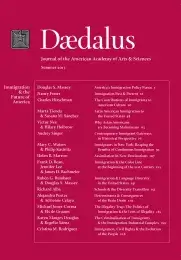Modernization for Emigration: Determinants & Consequences of the Brain Drain
This essay reviews existing theories of professional emigration as background to examine the present situation. Classical theories of the brain drain neglected the possibility that immigrant professionals would return to their home countries and make significant investments and economic contributions there. They do, in fact, with beneficial consequences for the development of these countries. The advent of the transnational perspective in the field of immigration has helped clarify these dynamics, while identifying the conditions under which professional cyclical returns and knowledge transfers can take place. Implications for the future attraction of foreign professionals by the United States and other advanced countries are discussed.
The migration of professionals and technicians from poorer countries to the developed world has received considerable attention from governments, industry, and academia, less because of the number of immigrants involved than because of the economic and cultural consequences of such flows. Dubbed “brain drain,” the movement of high human capital immigrants has traditionally been defined as a net loss for sending nations that spend scarce resources providing advanced training for their citizens, only to lose them to opportunities abroad after they have earned the necessary credentials.
But due to new theories of migration and new facts on the ground, this view has become considerably more nuanced in recent years. The traditional characterization of the brain drain relies on a simplified view of migration as a one-way process in which migrants leave to pursue a new life in the wealthier receiving countries, never to look back. On the contrary, recent evidence reveals a two-way and, sometimes, multidirectional traffic between . . .
